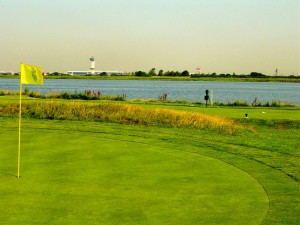Let’s face it. The quality of the greens we putt upon really impact our golf experience. Not only do they enhance or detract from our score, they convey the value of the green fees. Pay high fees and you expect good golf greens. Various studies have all indicated that the quality of the putting greens is the primary factor that affects our opinion of a golf course.
None other than golfing great Byron Nelson attributed the better scores of the modern player to the maintenance and the mowers, than to the golf equipment, skill, or teachings.
Maintaining a putting surface is a far more complex and complicated process than simply mowing special grasses very short. In short, it is the green superintendent’s greatest agronomic challenge.
Putting greens can vary from hole to hole, week to week, season to season, and location to location. First, we must recognize that a putting green is composed of thousands of individual plants and their health is influenced by a variety of physical and environmental factors.
Weather, temperature, moisture, foot traffic, and pests all affect plant health. When you add in the fact that we mow at such a low height – often less than 3/16 of an inch, this limits the development of a root system. As a result, these plants are under considerable stress. This is where the skilled superintendent actively maintains this balance.
Beyond these factors, there are three other very significant influences. Drainage is the most important factor. Says Bob Costa, a long-time golf course maintenance expert in Northern California, “Well-drained soils produce firmer, smoother putting surfaces that are less likely to compact, are easier to leach salts and tend to support less disease. In addition, roots growing in aerated soils tend to be healthier, thereby reducing plant stress. The common practice of constructing greens, using sand as the growing medium, is for these reason.” These draining greens allow our superintendents to work their magic.
Green size is yet another factor. Modern greens are built larger (in excess of 6,000 square feet) which allows the superintendent more options in hole location, thus dramatically reducing the wear and compaction. When you add good drainage, you can appreciate why a larger, well-drained surface makes for better surface.
The third feature influencing the quality of putting surface is the variety of turfgrass employed. Bentgrass has long been the choice for the best putting surfaces. Unfortunately this strain of grass requires a dry, warm environment that does not exist in many areas. The differences for different grasses even can be as subtle as the microclimates that can affect an area as small as a city or county. What may be good in one area may prove problematic in another.
So next time you step on that finely maintained putting surface, remind yourself that make or miss that putt, there is a whole bunch more involved in getting the surface so nice than just cutting a special grass really short. And if you spot the maintenance workers, you might just thank them for their remarkable efforts.

